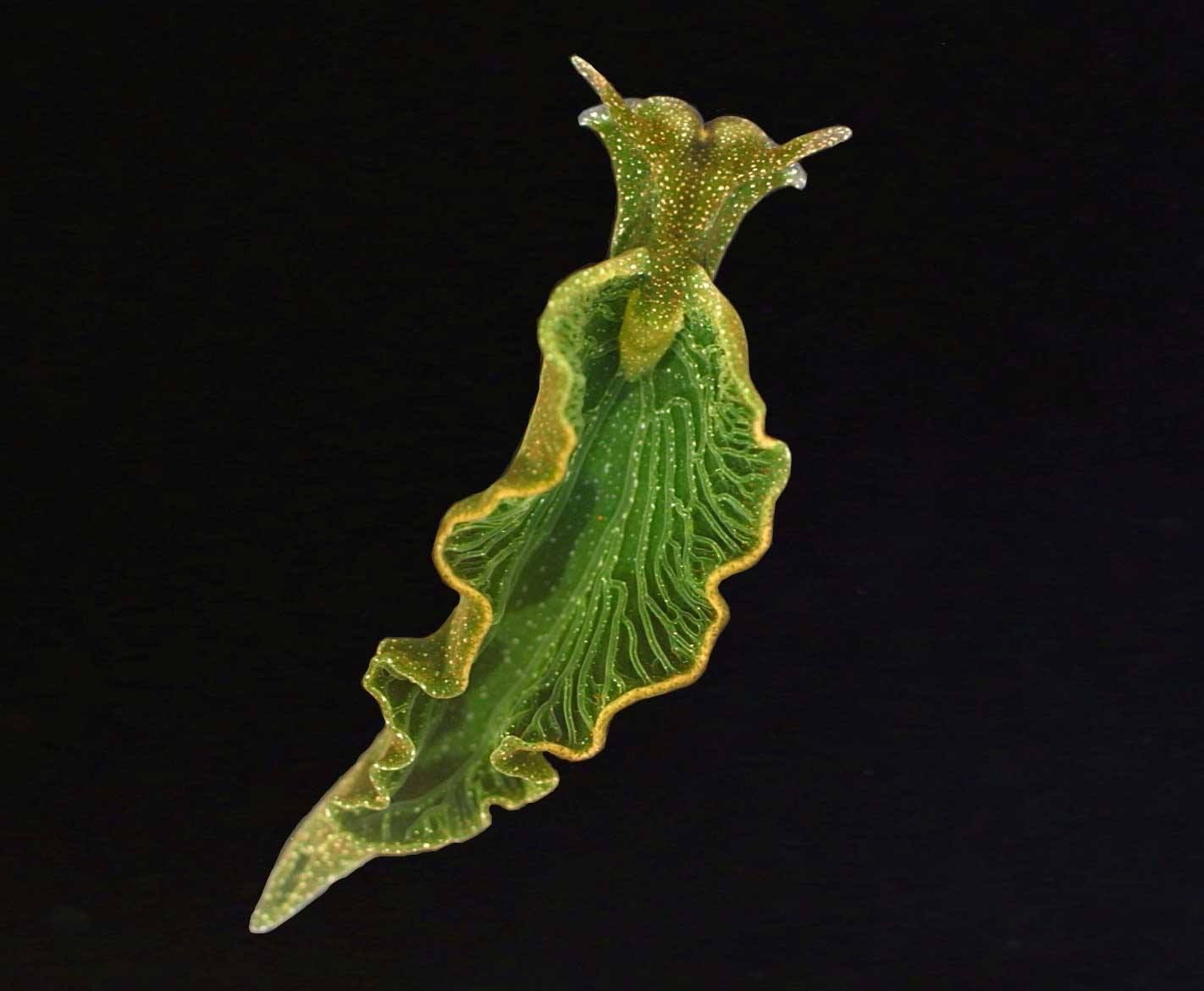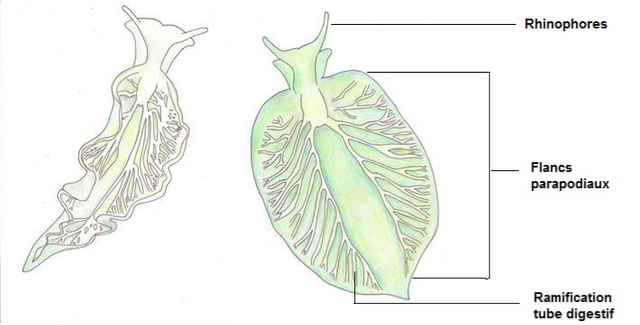BioCuriosity 02 [EN] - The story of Elysia, sailing between animal and vegetable.
(translated from french here)
Do you know Elysia chlorotica or more often called Emerald Elysia? This small and green sea slug that seems to sail between the animal and vegetable kingdom. Recently I heard someone explain that we do not really know how to classify it between these two big groups, that's why I thought it might be interesting to talk to you about this phenomenon of evolution still too unknown to my taste.
Let's start with a plain and simple description of my favorite mollusc!
Although most of the time she is green, it is possible to find rather reddish or gray individuals with small spots all along the body. With an average height of 3 cm, she has the ability to deploy or retract its parapodial flanks depending on the light intensity.
Observation drawing of Emerald Elysia
Morphologically quite close to a salad leaf, that's true, but she is truly animal. Let's be clear, defining what life is is not easy and defining the animal is not easy either because of the diversity present on our planet.
However, certain characteristic features do not deceive:
Firstly, there is no pecto-cellulosic wall characteristic of the plant kingdom.
Second, the presence of mitochondria to synthesize ATP, which is absent in the plant kingdom.
Thirdly, E. chlorotica is heterotrophic because it feeds on algae, but it is on this last point that things become more complex.
Heterotrophy is the ability to produce energy and therefore to grow and satisfy physiological needs by consuming organic matter. This concept is opposed to autotrophy, this skill that some living beings have - especially plants - to manufacture organic matter with minerals, drawing the energy necessary for this process in the solar rays. Basically it's photosynthesis.
This is where our little slug from the top of its 3 cm becomes extraordinary!

Unlike most plant-eating animals, this small creature will keep intact the chloroplasts it will ingest by consuming the algae Vaucheria litorea, when she begins her passage from the larval stage to the adult stage. It will endocyte them (that is to say incorporate them into its own cells) and reuse them to capture photons from the sun and thus have another source of energy. This is called keptoplasty.
Thanks to this faculty the Emerald Lady is able to survive several months, or even all her adult life without consuming food, provided the sun shines.
It is thought that this extraordinary capacity is due to the psbO gene (coding for a stabilizing protein inside photosystem II), which is a seaweed gene that was found in its genome, this one probably having acquired it via a horizontal transfer.
Tanks for reading !
my blog : https://steemit.com/@siniy
my instagram : https://www.instagram.com/biosiniy/
01 - The incestuous history of an acarien
To learn more :
Dabonneville C. (2013) Les animaux-plantes ou comment un animal peut-il être photosynthétique ? Espèces 9, 22-29
Biofutur (2009) numéro spécial Endosymbioses, n°299
Une conférence (en anglais) du Dr. Sidney Pierce « The sea slug that eats the sun | Sidney Pierce | TEDxTampaBay »
Eastern Emerald Elysia (Elysia chlorotica) - Photosynthetic Animal


its just wow . amazing information :) its really informative . keep it up .
Thank you for this positive return !
nice work.
Thank you :)
Congratulations @siniy! You have completed some achievement on Steemit and have been rewarded with new badge(s) :
Click on any badge to view your own Board of Honor on SteemitBoard.
For more information about SteemitBoard, click here
If you no longer want to receive notifications, reply to this comment with the word
STOPUne autre curiosité
https://steemit.com/mushrooms/@grildrig/colourful-mushrooms-on-a-tree-winter-photos
Très jolie curiosité en effet !
My favorite curiosity :
A Brief History of the Study of Consciousness, Stuart Hameroff
A little bit of history never hurts thank you, I will watch it with a relaxed head to try to understand everything. Although it is not pure biology I like to know the workings of what makes our current science.